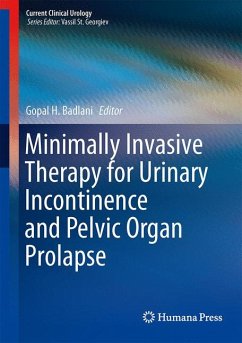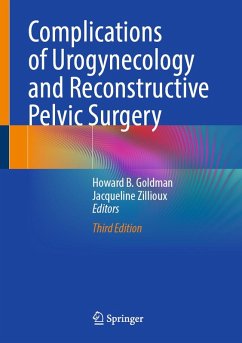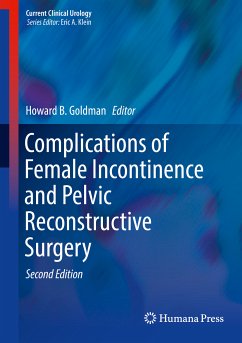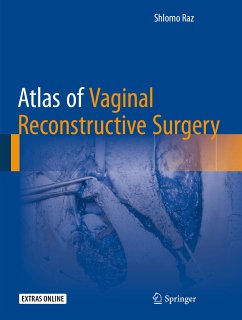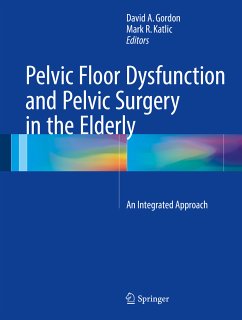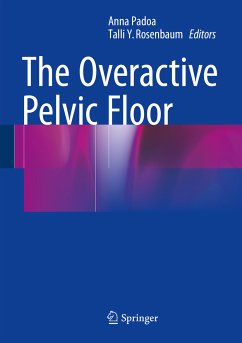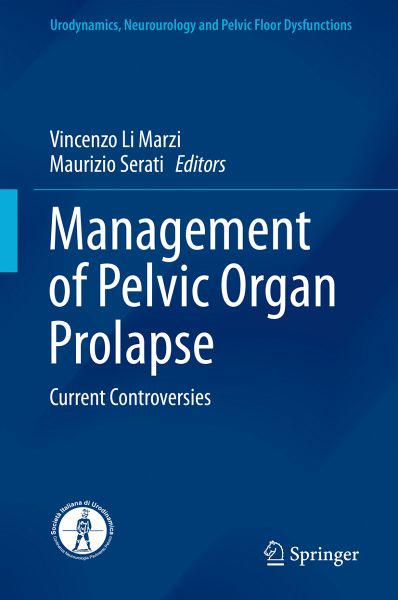
Management of Pelvic Organ Prolapse (eBook, PDF)
Current Controversies
Redaktion: Li Marzi, Vincenzo; Serati, Maurizio
Versandkostenfrei!
Sofort per Download lieferbar
64,95 €
inkl. MwSt.
Weitere Ausgaben:

PAYBACK Punkte
32 °P sammeln!
This book provides a comprehensive and up-to-date overview of the surgical treatment of pelvic organ prolapse, focusing especially on issues that continue to arouse controversy. In the first section, leading experts present detailed information on the surgical anatomy, pathophysiology, and epidemiology of prolapse and also the impact of concomitant functional disorders. The second section focuses on diagnostic work-up and the third is dedicated to the various treatment options aimed at resolution of the condition. The closing chapters discuss outcome measures and analyze the effects of prolaps...
This book provides a comprehensive and up-to-date overview of the surgical treatment of pelvic organ prolapse, focusing especially on issues that continue to arouse controversy. In the first section, leading experts present detailed information on the surgical anatomy, pathophysiology, and epidemiology of prolapse and also the impact of concomitant functional disorders. The second section focuses on diagnostic work-up and the third is dedicated to the various treatment options aimed at resolution of the condition. The closing chapters discuss outcome measures and analyze the effects of prolapse surgery on urinary, bowel, and sexual symptoms.
In 1966 Richard TeLinde stated that, "Every honest surgeon of extensive and long experience will have to admit that he is not entirely and absolutely satisfied with his long-term results of all his operations for prolapse and allied conditions." Although many uncertainties in the field have since been resolved, some major issues still require clarification. Often it can be difficult to find the right balance between treatment effectiveness in the long term and risk reduction, including with respect to complications. This book will help trainees and less experienced surgeons to make appropriate treatment choices and achieve optimal outcomes.
In 1966 Richard TeLinde stated that, "Every honest surgeon of extensive and long experience will have to admit that he is not entirely and absolutely satisfied with his long-term results of all his operations for prolapse and allied conditions." Although many uncertainties in the field have since been resolved, some major issues still require clarification. Often it can be difficult to find the right balance between treatment effectiveness in the long term and risk reduction, including with respect to complications. This book will help trainees and less experienced surgeons to make appropriate treatment choices and achieve optimal outcomes.
Dieser Download kann aus rechtlichen Gründen nur mit Rechnungsadresse in A, B, BG, CY, CZ, D, DK, EW, E, FIN, F, GR, HR, H, IRL, I, LT, L, LR, M, NL, PL, P, R, S, SLO, SK ausgeliefert werden.



